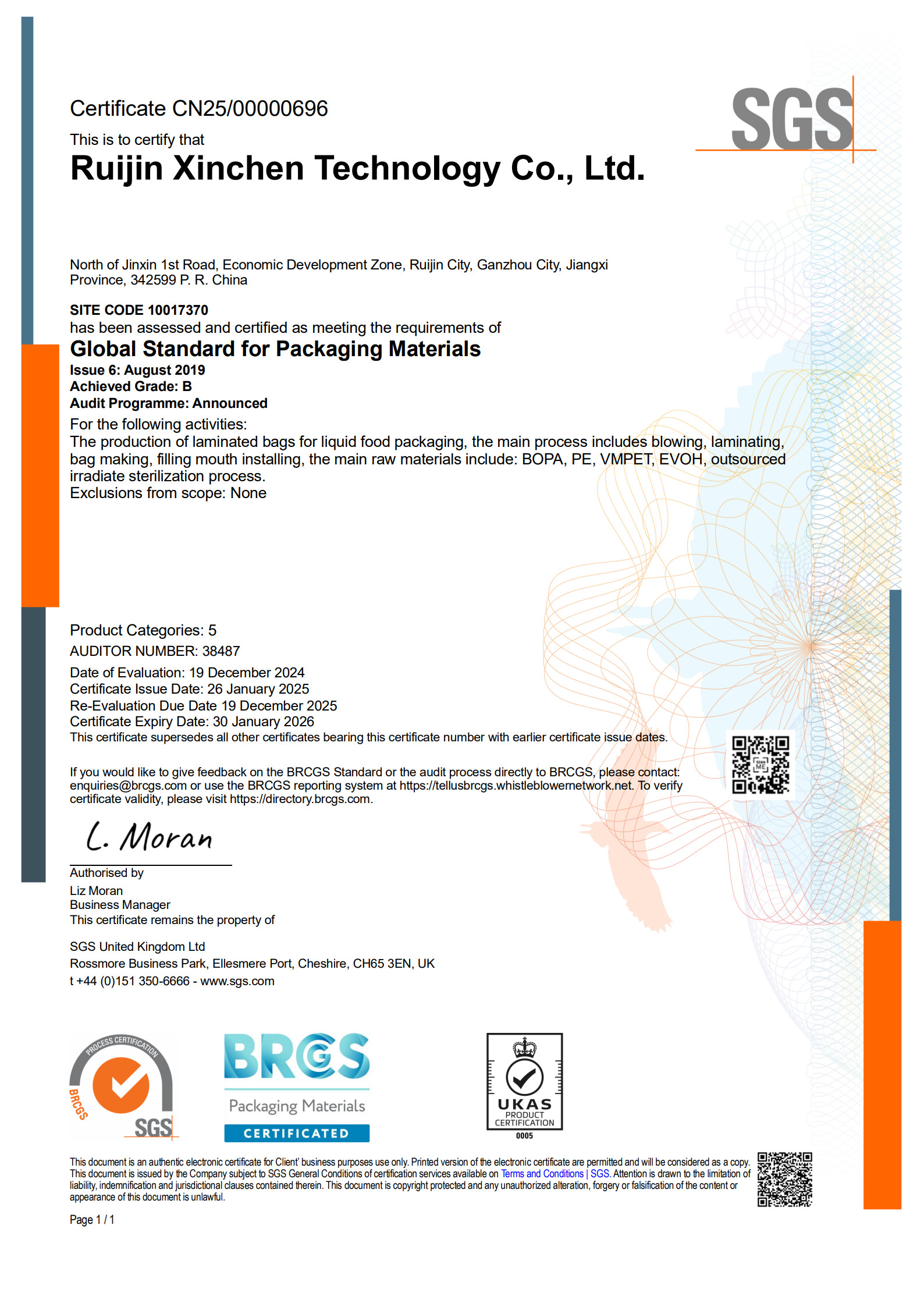
Products Integration
12+ Industrial Experience
Export To Over 35 Countries
7*24 Hours Customer Service
Global Concern for Food Packaging Safety In recent years, the safety of food pac...
READ MOREThe Core Value and Industrial Significance of Aseptic Bags Aseptic Bags, with th...
READ MOREIn the modern liquid packaging industry, the Bag-In-Box Liquid Valve, as a highl...
READ MOREWith increasing global demands for food safety, pharmaceutical storage and trans...
READ MOREIn the modern food and beverage industry, the development of packaging technolog...
READ MOREIn the modern packaging industry, flexible liquid packaging bags, as an innovati...
READ MOREThe performance of 220l Food Grade Aseptic Bag For Drum may indeed be affected to a certain extent during long-term storage or under different environmental conditions, but the specific degree of impact depends on multiple factors. The following is an analysis of the possible impact on its performance and how to maintain its stability and reliability:
Performance may be affected
Material aging: Aseptic bags are usually made of multi-layer composite materials, such as PE, VMPET, etc. In long-term storage or harsh environments such as high temperature and high humidity, these materials may gradually age, resulting in performance degradation, such as weakened barrier properties and increased brittleness.
Valve sealing: The valve is an important component of the aseptic bag, and its sealing directly affects the safety and shelf life of the product. During long-term storage, the valve may cause a decrease in sealing due to material aging, external force extrusion, etc., which may cause product contamination or leakage.
Microbial contamination: Although aseptic bags are designed to prevent microbial contamination, during long-term storage, if the environmental conditions are not properly controlled (such as excessive temperature and humidity), it may still cause microbial growth, thereby affecting the quality and safety of the product.
How to maintain its stability and reliability
Select high-quality materials: Select materials with good weather resistance and anti-aging properties to make aseptic bags, which can effectively extend their service life and maintain stable performance.
Strictly control the production process: During the production process, the process parameters of each process should be strictly controlled to ensure that the quality of the aseptic bag meets the standards. At the same time, strict quality inspections are carried out on key components such as valves to ensure that their sealing performance is reliable.
Optimize storage conditions: During storage, high temperature, high humidity and other harsh environments should be avoided as much as possible, and the environment should be kept dry and clean. For products that need long-term storage, it is recommended to conduct regular quality inspections to ensure that the products are in good condition.
Reasonable packaging and transportation: During packaging and transportation, care should be taken to avoid damage to the aseptic bag by external force extrusion, friction, etc. At the same time, appropriate packaging materials and methods should be used to ensure that the product will not be contaminated or damaged during transportation.
By selecting high-quality materials, strictly controlling the production process, optimizing storage conditions, and reasonable packaging and transportation, the stability and reliability of 220l Food Grade Aseptic Bag For Drum can be effectively maintained under long-term storage or different environmental conditions.
Regarding the types and sizes of valves equipped with 220l Food Grade Aseptic Bag For Drum, and how to ensure the sealing and convenience of the valves, the following are detailed answers:
Valve types and sizes
Type:
Since this aseptic bag is designed for a variety of foods (such as mango, kiwi, pineapple puree, concentrated juice, strawberry, diced tomatoes, etc.), the valve type it is equipped with is usually a general type suitable for these foods. Common valve types include spiral valves, butterfly valves, ball valves, etc., all of which have the characteristics of simple structure and convenient operation.
Size:
The article does not directly mention the specific valve size, but generally speaking, the size of the valve will be determined according to the capacity and purpose of the aseptic bag. For 220l food-grade aseptic bags, the valve size is usually matched with its capacity to ensure that the fluid can enter and exit smoothly while ensuring sealing.
How to ensure the sealing and convenience of valves
Sealing:
Material selection: The valve material should be stainless steel or other corrosion-resistant materials that meet food safety standards, such as 316L stainless steel mentioned in reference article 2, to ensure that it will not contaminate food.
Sealing structure: The valve should adopt advanced sealing structure, such as double sealing surface design, to ensure that it can be completely sealed when closed to prevent the entry of external contaminants.
Quality inspection: After the valve is produced, strict quality inspection should be carried out, including sealing performance test, to ensure that each valve meets the quality requirements.
Convenience:
Operation method: The valve should be designed with simple operation methods, such as handwheels, handles, etc., to facilitate users to open and close quickly.
Installation position: The installation position of the valve should take into account the convenience of user operation, usually installed on the top or side of the sterile bag, so that users can connect and disconnect the pipeline.
Marking and instructions: Clear opening and closing directions, instructions for use and other information should be marked on the valve to facilitate users to operate correctly.


+86-15779056622

